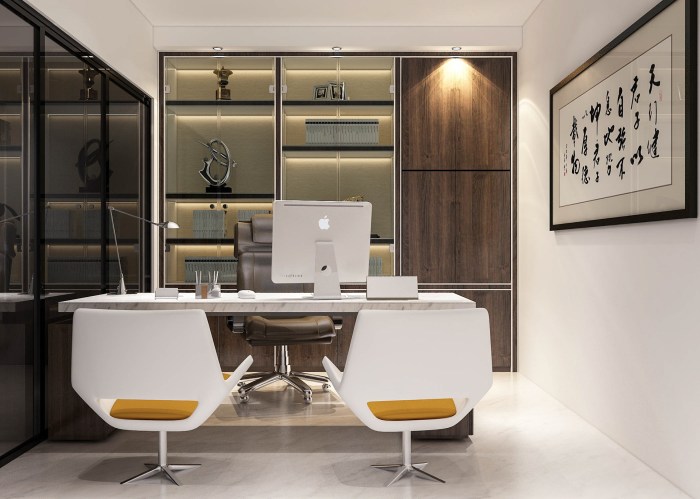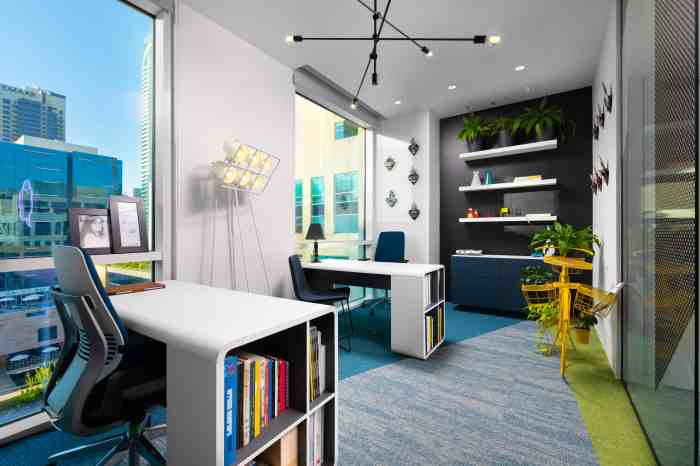Crafting Inspiring Office Designs: A Path to Enhanced Productivity
Office design plays a crucial role in shaping the work environment, impacting employee productivity and well-being. As companies strive to create innovative spaces that foster creativity and collaboration, the elements of effective office design continue to evolve. Let's delve into the world of office design and explore how it influences the way we work.
Importance of Office Design
Office design plays a crucial role in shaping the work environment and impacting employee productivity. A well-designed office space can have a significant influence on employee morale and well-being, ultimately contributing to the overall success of a company.
Impact on Employee Productivity
Efficient office design can enhance employee productivity by creating a workspace that is conducive to concentration and collaboration. For example, open floor plans with designated quiet areas can help employees focus on tasks while still allowing for easy communication and teamwork.
Influence on Employee Morale and Well-being
The design of an office can greatly affect employee morale and well-being. Natural lighting, ergonomic furniture, and green spaces can create a more comfortable and inviting work environment, leading to higher job satisfaction and lower stress levels among employees.
Examples of Successful Companies
- Google: Known for its innovative office designs, Google's campuses feature unique workspaces such as nap pods, game rooms, and outdoor recreational areas to promote creativity and employee engagement.
- Airbnb: Airbnb's office design reflects the company's values of community and diversity, with flexible work areas and themed meeting rooms that inspire collaboration and inclusivity.
- Apple Park: Apple's headquarters, also known as Apple Park, boasts a futuristic design with open workspaces, greenery, and advanced technology integration to foster innovation and productivity among employees.
Elements of Effective Office Design
Effective office design involves considering various key elements to create a productive and comfortable workspace. Elements such as lighting, color schemes, furniture layout, and green spaces play a crucial role in shaping the overall environment of an office.
Lighting
Proper lighting is essential in office design as it can impact productivity, mood, and overall well-being of employees. Natural light is ideal as it helps reduce eye strain, enhances mood, and boosts energy levels. Artificial lighting should also be carefully planned to avoid glare and shadows, creating a well-lit and inviting workspace.
Color Schemes
Color schemes in an office can influence the atmosphere and ambiance of the space. Warm colors like yellow and orange can promote creativity and energy, while cool colors like blue and green can evoke calmness and focus. It is important to choose colors that align with the company's brand and culture to create a cohesive environment.
Furniture Layout
The layout of furniture in an office can impact the flow of work and collaboration among employees. Open layouts encourage communication and teamwork, while private spaces allow for concentration and focus. Ergonomic furniture is also crucial to promote comfort and reduce strain, enhancing productivity and overall well-being.
Green Spaces
Incorporating green spaces or natural elements in office design can have a positive impact on employee well-being and creativity. Plants not only improve air quality but also reduce stress and increase focus. Green walls, indoor gardens, or outdoor spaces can create a sense of tranquility and connection to nature, enhancing the overall office environment.
Trends in Modern Office Design
In today's fast-paced work environment, modern office design trends are constantly evolving to meet the needs of employees and enhance productivity. Let's explore some of the key trends shaping the way offices are designed in the 21st century.
Open Floor Plans and Flexible Workspaces
One of the most prominent trends in modern office design is the shift towards open floor plans and flexible workspaces. These layouts promote collaboration, communication, and creativity among employees by breaking down physical barriers and creating a more fluid work environment.
Flexible workspaces allow employees to choose where and how they work based on their tasks and preferences, fostering a sense of autonomy and empowerment.
Traditional Cubicle-Based Layouts vs. Contemporary Designs
Gone are the days of isolated cubicles and rigid office structures. Modern office design emphasizes open, transparent spaces that encourage interaction and teamwork. By moving away from traditional cubicle-based layouts, companies are fostering a more inclusive and dynamic work culture that values communication and innovation
Contemporary designs often incorporate shared spaces, lounges, and breakout areas to facilitate collaboration and socialization.
Technology Integration in Office Design
Technology plays a crucial role in shaping modern office design, enabling flexible and efficient work environments. From smart lighting and temperature control systems to wireless charging stations and video conferencing tools, technology integration enhances productivity and connectivity in the workplace.
Designing offices with technology in mind not only streamlines daily operations but also creates a more engaging and futuristic work environment for employees.
Creating a Functional Workspace

Creating a functional workspace is crucial for maximizing productivity and employee satisfaction. By optimizing space utilization, incorporating ergonomic furniture, and finding the right balance between privacy and collaboration, you can design an office that meets the needs of your team.
Optimizing Space Utilization
When designing your office layout, consider the flow of movement and how different areas can be utilized efficiently. Open floor plans can promote collaboration, while individual workstations can provide focus. Utilize vertical space with shelves and storage solutions to free up floor space.
Importance of Ergonomic Furniture
Ergonomic furniture is essential for promoting the health and well-being of employees. Invest in chairs that provide proper back support, adjustable desks to accommodate different heights, and monitor arms to reduce neck strain. Prioritizing comfort can lead to increased productivity and reduced absenteeism.
Balancing Privacy and Collaboration
Striking the right balance between privacy and collaboration is key in office design. Consider incorporating private meeting rooms, phone booths, or designated quiet areas for focused work. Open workspaces can encourage teamwork, but it's important to provide options for employees to have privacy when needed.
Epilogue

In conclusion, office design is not just about aesthetics; it's about creating functional and inspiring workspaces that empower employees to perform at their best. By understanding the importance of incorporating elements like lighting, furniture layout, and green spaces, companies can cultivate a work environment that fuels success.
As the landscape of modern office design continues to shift, embracing these trends and strategies can lead to a more productive and fulfilling work experience for all.
Common Queries
How does office design impact employee productivity?
Office design influences productivity by creating spaces that encourage focus, collaboration, and creativity.
What key elements should be considered in office design?
Key elements include lighting, color schemes, furniture layout, and the incorporation of natural elements.
What are some current trends in modern office design?
Modern trends include open floor plans, flexible workspaces, and the integration of technology for enhanced efficiency.
How can office design balance privacy and collaboration?
Strategies like thoughtful space utilization, ergonomic furniture, and smart layout choices help achieve a balance between privacy and collaboration.




